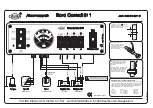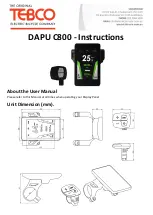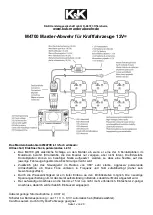
Rheonics | Switzerland | U.S.A.
SRV, SRD, SRV-FPC, SRD-FPC Installation and Intrinsic Safety Manual
P. 26
Version 2.0, Updated: October 29, 2020
Rheonics GmbH, Klosterstrasse 19, 8406 Winterthur, Switzerland
©Rheonics. Rheonics confidential and proprietary information.
5.4.2.
Bonding to the sensor
Two options are available for equipotential bonding to the sensor itself. The first makes use of a
ground bonding tab that is affixed to the M12 connector shell on the back of the sensor:
1
Crown lock washer with bonding tab
2
Crown lock washer is forced down upon M-12 connector shell. Deformation of hardened
teeth guarantees solid contact with threads of connector
3
Equipotential bonding wire
4
Fully assembled grounding tab is permanently installed; cannot be inadvertently dis-lodged
Figure 12: Installation of grounding tab on SRV/SRD sensor
The crown lock washer has an internal diameter that is slightly smaller than the outside
diameter of the connector. When forced over the connector shell, the hardened spring fingers
of the lock washer dig into the shell slightly, providing both a electrical bond and a solid
mechanical connection. The bonding wire, which must have a minimum cross-sectional area of
4mm
2
, is then connected to the bonding tab by means of a screw, a nut and two toothed lock
washers. The crown lock washer leaves sufficient space for normal installation of the M12
sensor connector.
A second option uses the cable shield for equipotential bonding. This can be done provided that
the cross-sectional area of the shield conductor is 2.5 mm
2
. The commercial cable, Helu Kabel
type OB-BL-CY 4x2x0.5mm
2
, has a shield cross section sufficient to fulfill this requirement. It is
then essential to use a suitable M12 cable connector that has a defined ground connection to
which the cable shield can be attached. The other end of the cable, whose conductors are
attached to the terminals of the Zener diode barriers, must also have a firm attachment of its
shield to the grounding terminal of the Zener diode barrier. A recommended method is to free
the conductors from the shield over a length of about 12 cm, and to cover the shield with a







































